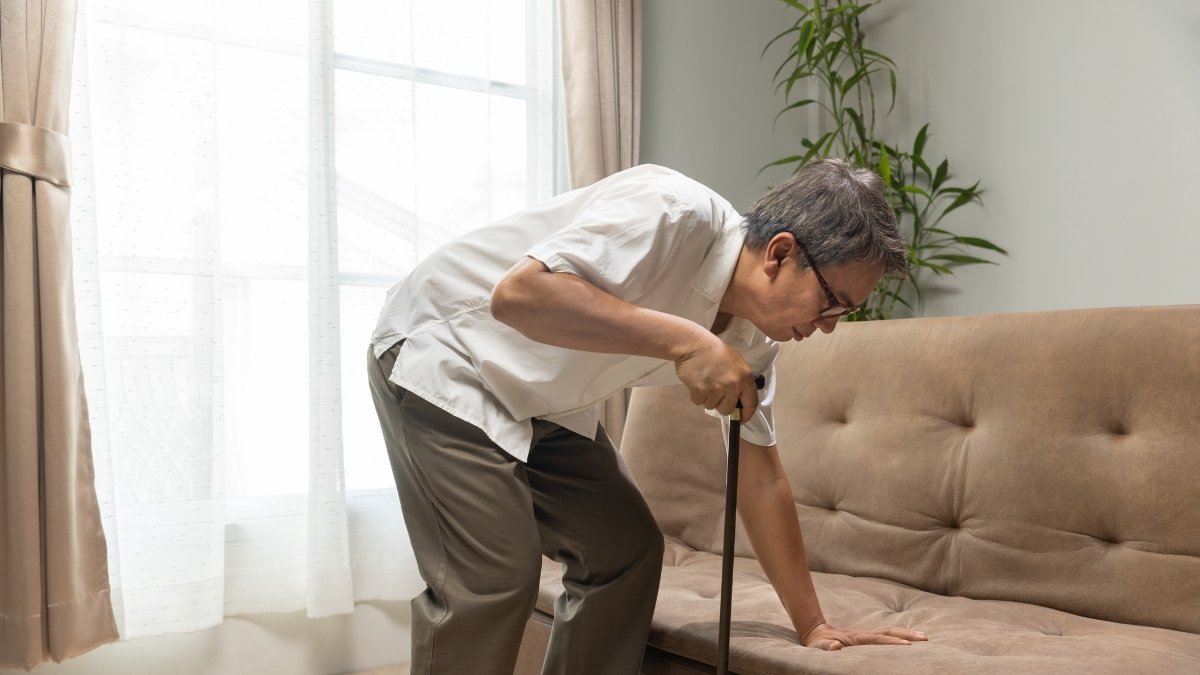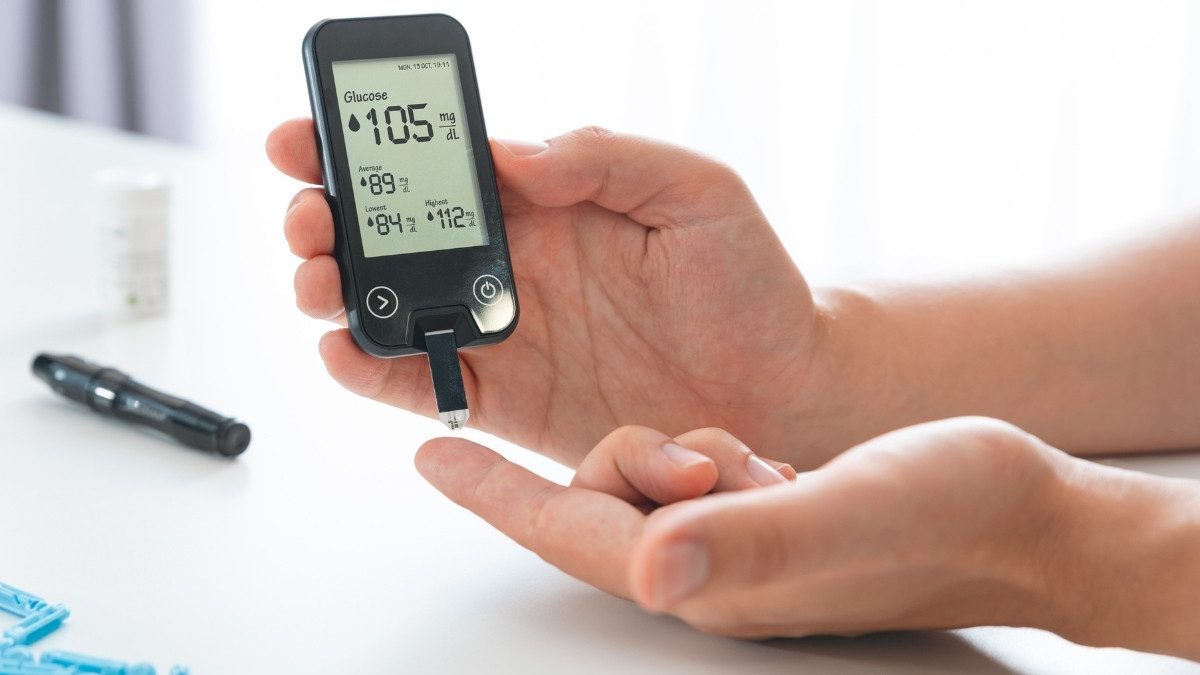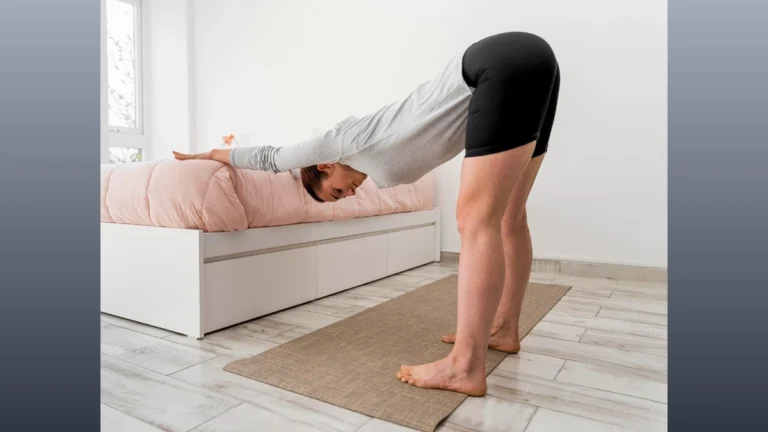Why Sitting for More Than 4 Hours a Day Doubles Your Risk After 60 (Even If You Exercise)

You walk every morning, do your stretches, and watch your diet—so why did your doctor just warn you about your sitting habits?
Here’s the truth: even if you exercise, sitting after 60 can silently harm your heart, muscles, and metabolism. You might think your daily walk cancels out hours spent watching TV, reading, or sitting at the computer—but science says otherwise. A sedentary lifestyle after 60 brings health risks that regular workouts can’t fully erase.
In this guide, you’ll learn what prolonged sitting really does to your body, the 4-hour threshold that raises health risks for seniors, and how to build easy habits that break up sitting time without disrupting your day.

Because protecting your health after 60 isn’t just about how much you move—it’s also about how often you stop sitting.
The Shocking Science Behind Sitting After 60
Sitting too long is more harmful than most realize—especially after 60. Research shows that just four hours of daily sitting raises cardiovascular risk by up to 100%. Every extra hour adds another 15% risk, according to Australian studies.

When you sit for more than 30 minutes, your metabolic rate drops 90%, slowing calorie burn and blood flow. For older adults, muscle loss and inflammation rise faster, and muscle protein synthesis can fall 35% quicker than in younger bodies.
Think of prolonged sitting as pressing “pause” on your metabolism. And here’s why that’s especially concerning for active seniors…
Why Your Morning Walk Isn’t Enough (The Active Couch Potato Effect)
You might walk every morning, but if you sit most of the day, your body still pays the price. This is called the “active couch potato” effect — when 30–60 minutes of exercise can’t undo 8–10 hours of sitting.

Studies show even 60–75 minutes of activity only partly offsets long sitting time. Sitting slows fat breakdown by suppressing lipoprotein lipase, no matter how fit you are.
Think of it like brushing your teeth once, then eating candy all day. Ask yourself: how many hours do you really sit? Because for seniors, too much sitting can erase the benefits of exercise fast.
The 5 Hidden Dangers of Prolonged Sitting After 60
Sitting too long might feel harmless—but for adults over 60, it quietly raises major health risks. Here’s what really happens when hours pass without movement.
1. Cardiovascular Deterioration
When you sit for long stretches, blood flow slows, blood pressure rises, and arteries stiffen. This forces your heart to work harder to pump blood through a less flexible system. The sluggish circulation also makes it easier for fatty acids to build up and clog arteries, a primary driver of heart disease.

This condition can lead to dangerous blood clots, particularly in the legs, known as deep vein thrombosis (DVT). Even brief standing or walking breaks can significantly improve circulation and reduce this strain.
Seniors who sit 8+ hours daily face a 147% higher cardiovascular risk and greater chances of blood clots.
2. Accelerated Muscle Loss (Sarcopenia)
Extended sitting speeds up muscle breakdown, especially in the legs. Your large, stabilizing muscles like the glutes and quadriceps are not engaged, sending a signal to the body that they are not needed.

This “use it or lose it” scenario directly weakens your foundation, making it harder to get out of a chair, climb stairs, or maintain balance. This decline in strength sharply increases the risk of falls, which can lead to severe injuries and a loss of independence for older adults.
Research shows muscle decline happens 50% faster in older adults who sit most of the day.
3. Blood Sugar Dysregulation
After meals, sitting reduces insulin sensitivity, making blood sugar harder to control. When you are active, your muscles use glucose from your blood for energy. But while sitting, your muscles demand very little fuel.

As a result, sugar remains in your bloodstream, forcing your pancreas to produce more insulin to manage it. Over time, this can lead to insulin resistance, a precursor to type 2 diabetes. A simple walk after eating helps muscles absorb that excess sugar right away.
4. Cognitive Decline
Low activity slows brain blood flow, depriving it of the oxygen and nutrients needed to thrive. This reduced circulation hinders the brain’s ability to clear away toxic proteins linked to dementia.

The brain is like a muscle; it requires stimulation from physical activity to maintain its connections and create new ones. A sedentary lifestyle is linked to reduced neuroplasticity, which impacts your ability to learn, adapt, and recall information as you age.
A UCLA study found that excessive sitting causes thinning in brain areas vital for memory and focus—early signs of cognitive decline.
5. Increased Mortality Risk
Even regular exercisers aren’t safe from the effects of being sedentary the rest of the day. Think of it this way: a 30-minute workout cannot undo 10 hours of inactivity. Chronic sitting is an independent risk factor for poor health, separate from your exercise habits.

This “active couch potato” phenomenon shows that consistent, gentle movement throughout the day is just as important as structured workouts. Breaking up long sitting periods is essential for a longer, healthier life.
How Much Sitting Is Too Much? Understanding Your Personal Risk
Research shows the danger starts after 4 hours of daily sitting—yet most seniors sit around 9.5 hours every day without realizing it. Add it up: breakfast, lunch, dinner, TV time, reading, computer use, and driving.

Try a quick sitting time audit. Track your day in 30-minute blocks—you might be shocked how much adds up. If you have diabetes, heart disease, or obesity, your risk from prolonged sitting is even higher.
Most people underestimate their daily sitting time by 2–3 hours, which means your body may already be paying the price. Now that you know your risk, here’s what to do about it.
The 2-Minute Solution: Breaking Up Sitting Time Throughout Your Day
Here’s the truth — you don’t need hour-long workouts to fight sitting risks. Research shows that standing or moving for just 2 minutes every 30 minutes can cut blood sugar spikes by 30% and improve heart health.

Try these quick “movement breaks” to reduce sitting time: stand during phone calls, do counter push-ups, march in place, or walk to refill your water. Even shoulder rolls and calf raises count.
Set a timer for every 30 minutes. These active breaks for seniors are simple, effective, and easy to build into daily life — just like Tom, 72, who fits in 8–10 movement breaks during TV time.
Special Considerations: When Sitting Is Necessary
Sometimes, sitting after 60 is unavoidable — especially with mobility limitations or chronic pain. But that doesn’t mean you’re stuck. Focus on what you can do. Even shifting your position every 10 minutes helps circulation and joint comfort.

Try seated exercises for seniors like ankle pumps, seated marches, and gentle arm raises. Use a chair with good lumbar support or add a cushion to keep your spine aligned.
If pain worsens or swelling appears, check with your healthcare provider. Remember, some movement is always better than none — even from a chair, your body benefits from every small effort.
Lastly:
Here’s the truth: sitting more than 4 hours a day after 60 can double your health risks—even if you exercise. That sounds scary, but the fix is simple. You don’t need a gym or long workouts to protect your health.
Every 2-minute movement break matters. Standing, stretching, or walking for just a few minutes every half hour keeps your blood flowing and your muscles active. Small actions truly add up.

Start today: set a 30-minute timer. When it goes off, stand up, stretch, or walk to refill your water. Do it all day—and watch your energy, balance, and confidence improve.
Your life after 60 doesn’t have to be limited by sitting. Take control of your sedentary lifestyle starting now, one movement break at a time.






